Performance Analysis
We limited our testing to 1080p and 1440p on account of 4K being deemed an unsuitable resolution for this card in our original review. We’ll highlight important card-to-card comparisons as always, but the original review has a more details analysis of the RX 5700 XT’s position in the market. For this review we assume a basic familiarity of how it stacks up.
At 1080p the RX 5700 XT Pulse offers average frame rates between 74fps and 120fps, meaning it will pair perfectly with a high refresh rate monitor. The 99th percentile is only below the 60fps barrier in two of our games and never below 40fps, and Sapphire’s custom design is roughly four percent faster than the reference design here.
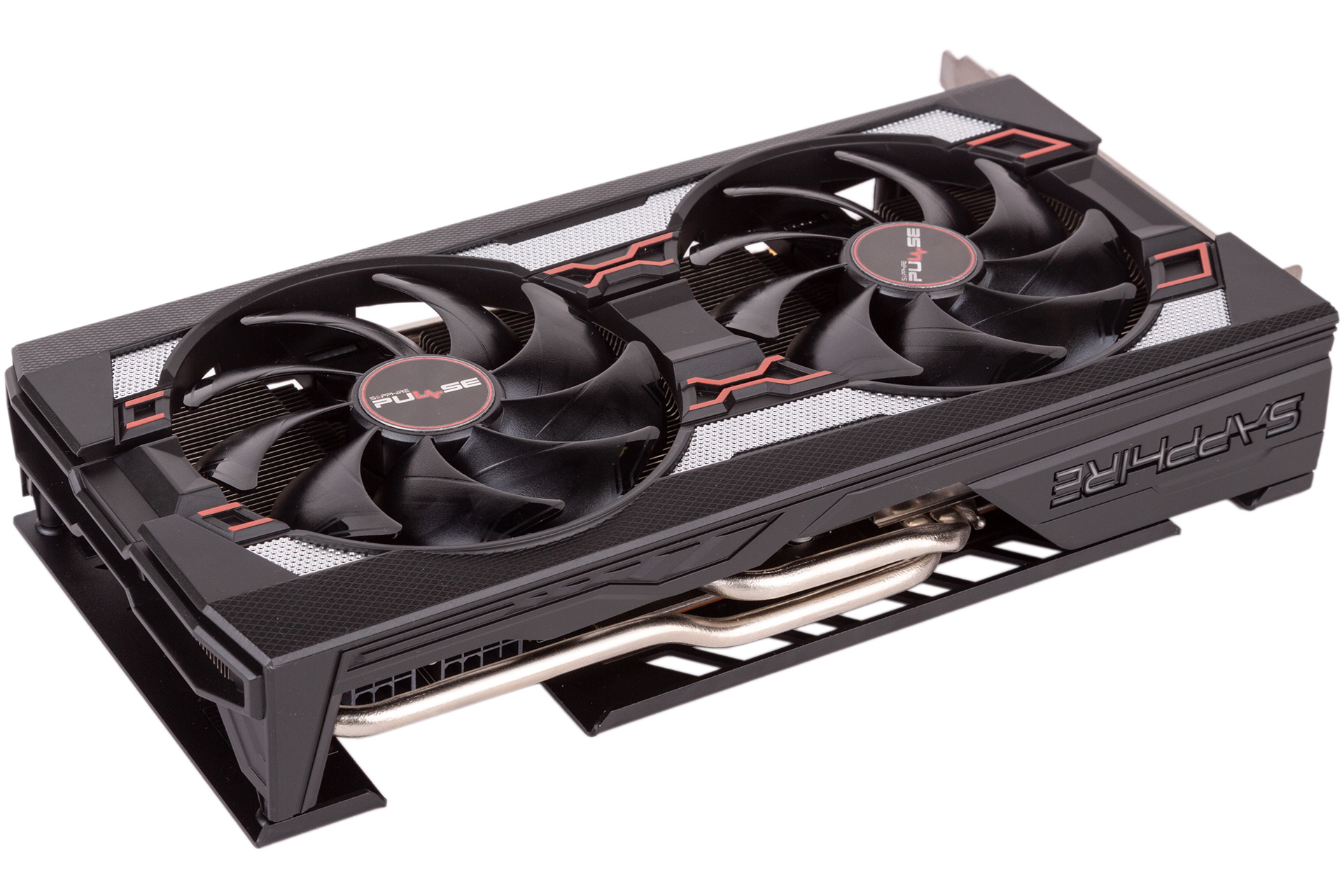
At 1440p we see frame rates between 53fps and 102fps, and only two of six games have sub-60fps results. 99th percentile results are strong across the board, with 36.3fps being the lowest result in Metro Exodus. At this resolution the advantage over the RX 5700 XT reference is three percent; the overall difference is 3.5 percent in Sapphire’s favour. This extends to 14 percent when we compared Sapphire’s card to a standard RX 5700.
We also see a lead of 10 percent over the RTX 2060 Super FE, ranging from just 1.3 percent in Total War: Three Kingdoms at 1080p to 19 percent in Metro Exodus at 1440p. The AMD-based card fares relatively better in our DX12 tests, too. Gigabyte’s factory-overclocked RTX 2060 Super Gaming OC, meanwhile, cuts Sapphire’s lead in half and is faster in Total War: Three Kingdoms, but all other games remain faster on Sapphire’s card.
The RTX 2070 Super FE is ahead by six percent overall, but again there’s game-based variance. The lead extends to 13 or 14 percent in both The Division 2 and Total War: Three Kingdoms, but elsewhere it’s below five percent.
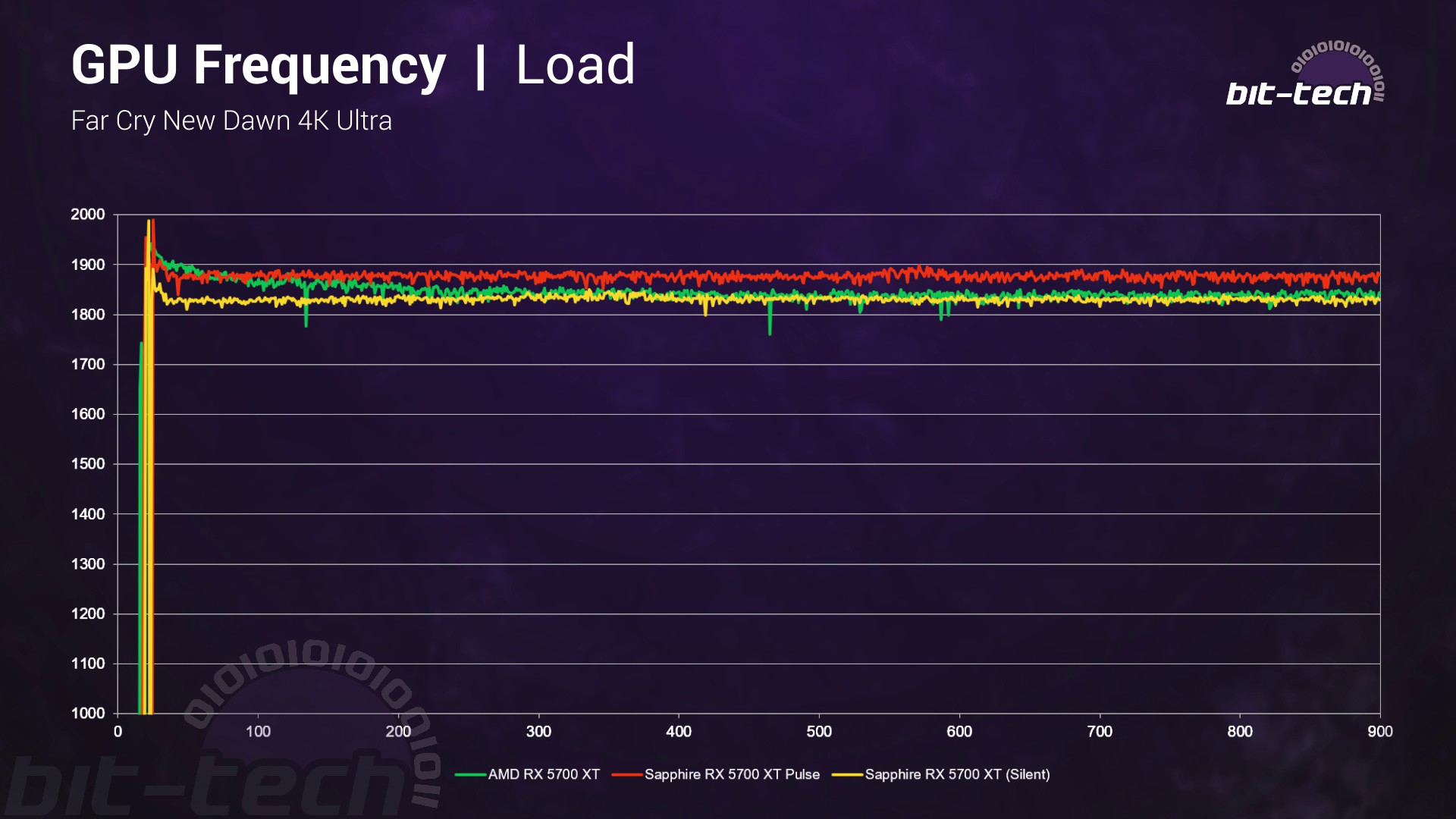
Boost speeds using the Silent BIOS are no worse than reference clocks; after five minutes the two cards level out to just below 1,850MHz. The overclocked Boost BIOS (the default one), meanwhile offers consistently higher clocks closer to 1,900MHz. This difference is unlikely to be overcome by card-to-card variance, so it’s fairly safe to say that Sapphire’s card is faster. The difference in performance between the two modes is around two percent as measured by 3DMark Time Spy.
The downside to overclocking Navi is power consumption; we see 16W more when using this card compared to reference, which reflects exactly the difference in Total Board Power rating. Interestingly, the Silent BIOS gives us a 12W lower figure, suggesting a more efficient card design on Sapphire’s part. The normal BIOS, meanwhile, puts it at RTX 2080 Super levels and 40W higher than Gigabyte’s overclocked RTX 2060 Super. It’s a win for Nvidia here, then, but not a disastrous result for the Navi-based card.
The temperature chart is where the cooler really shines; regardless of BIOS, we see a delta T results that’s 10°C lower than reference (73°C at 25°C ambient). Better yet, it’s far quieter, with fans speeds of around 1,600 RPM using Boost BIOS and 1,250 RPM using the Silent BIOS, neither of which is particularly intrusive. Looking instead at the GPU ‘Hot Spot’ temperature, the difference between the cards is over 15°C, but memory and VRM temperatures are no better than on the reference design, so there’s room for improvement there. Remember also that the fans do indeed switch off when the GPU is idle, and this applies to both BIOSes.
With our extra power limit and 50MHz frequency curve uplift, the card was stable boosting to around 2,025MHz, which is around 150MHz higher than stock and shows just how much is down the increased power limit. Performance did go up by 5-7 percent, which isn’t a bad result, but the overclock is hugely inefficient. Power consumption went up to RX Vega 64 levels, with the GPU alone consuming at least 50W more. This places massive stress on the cooler, with fan speeds hitting almost 3,000 RPM – way too loud – and the GPU temperature returning to reference card levels. The memory and VRM temperatures actually go down, but that’s primarily a result of them receiving substantially more airflow.
While it’s good to see that Navi is able to be overclocked, doing so to an effective level seems to require a huge amount of power, to the point where air coolers aren’t likely to cope well enough while retaining usable noise levels. This means most will need to turn to liquid-cooling, and it’ll certainly be interesting to see results doing that, but Sapphire’s custom PCB design means it’ll be relying on water-cooling companies to produce blocks that fit it.
Conclusion
The first thing to discuss here is that the pricing of this card puts it in different positions in the US and UK markets. Stateside, Sapphire’s suggested pricing of $409 is a mere $10 more (2.5 percent) than reference pricing for RX 5700 XT and RTX 2060 Super, and $90 below RTX 2070 Super. That makes it very good value, as it’s a full 10 percent quicker than RTX 2060 Super, and RTX 2070 Super is only six percent faster overall.
In the UK, however, Sapphire has somehow landed at £425, a full £45 (12 percent) higher than reference/RTX 2060 Super and only £50 cheaper than RTX 2070 Super. It’s also on par with good overclocked versions of the RTX 2060 Super such as Gigabyte’s Gaming OC. This harms its value proposition, and even though it is still five percent faster than that Gigabyte card, that’s a GPU with real time ray tracing support. Admittedly , that still is not hugely relevant, but it is becoming more so with each month. It’s also a card that also overclocks better – we got seven percent more performance out of it while retaining acceptable fan speeds.
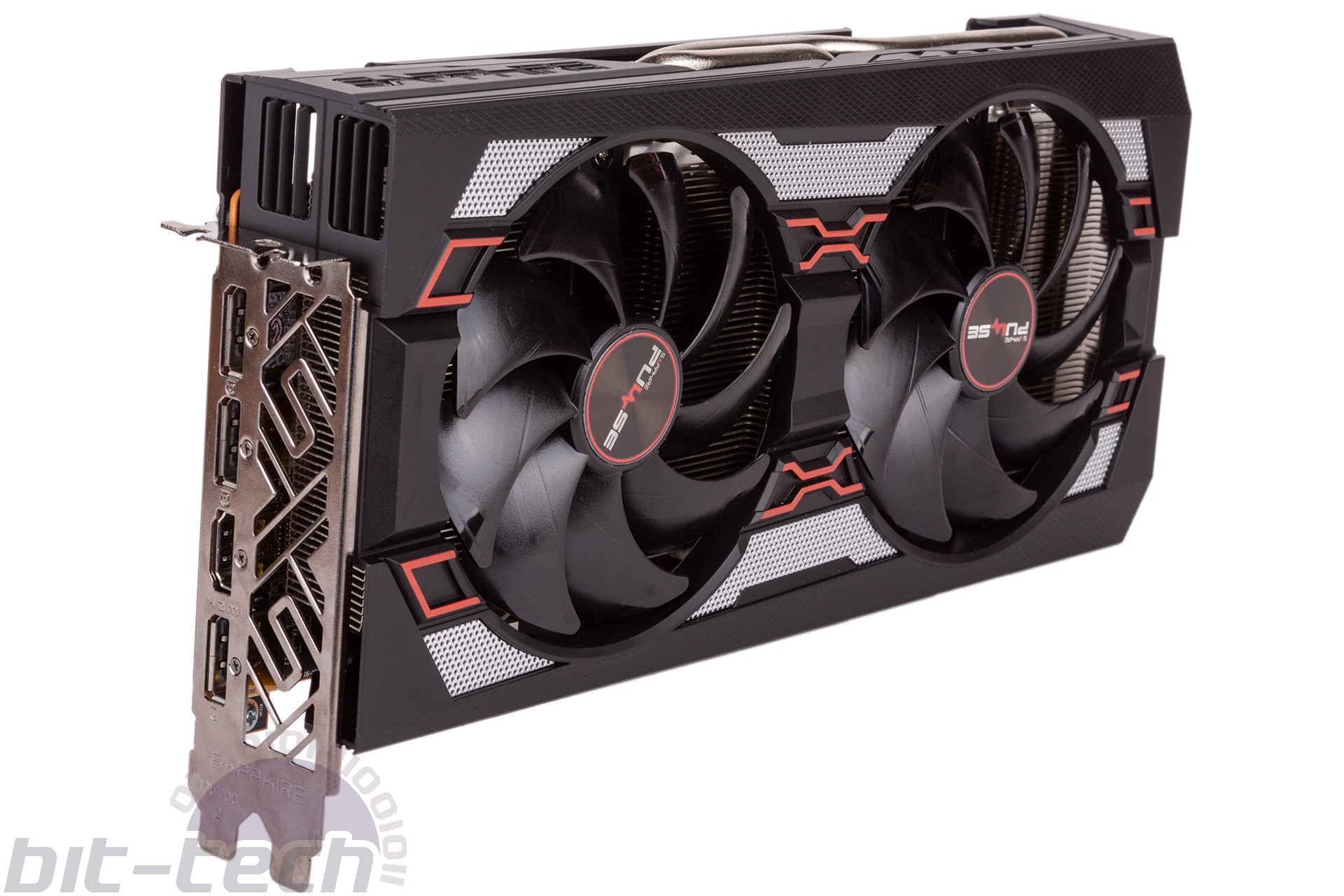
If this pricing is stuck to, our verdict is that for the US market the Sapphire RX 5700 XT Pulse is a great-value alternative to the reference design and probably the best option we’ve seen at that price level for any gamer not interested in ray tracing. It essentially becomes the new baseline that we’d expect other AMD partners to be on par with. In the UK, however, it’s still a decent offering, but the price is far less compelling, and it wouldn’t be difficult to justify opting for RTX 2060 Super instead. The £399 mark is what we’d want to see in order to match the value that US customers are getting, assuming retailers do stick to Sapphire’s MSRP.
Sapphire’s card certainly isn’t perfect, and we’d like to see better memory/VRM cooling, a memory overclock, some LED control, and a longer warranty, but it gets the essentials right. By being a touch faster, much cooler, and far quieter, Sapphire has addressed the imbalances in the RX 5700 XT design. As such, it comes recommended, even if it is a much better buy for US readers than UK ones right now. Hopefully we’ll see better deals from other partners on these shores, so stay tuned for further custom Navi reviews.


MSI MPG Velox 100R Chassis Review
October 14 2021 | 15:04

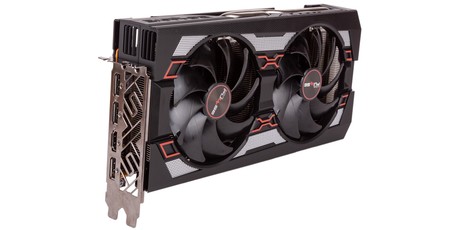
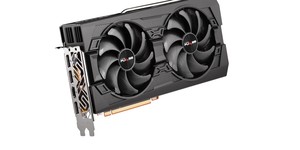
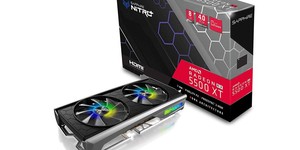





Want to comment? Please log in.